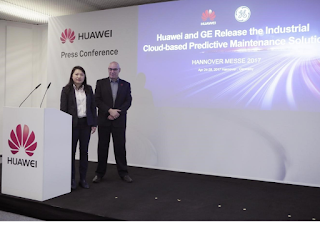This month's Open Networking Summit
(ONS 2017) in Silicon Valley, which marked the sixth instalment of the annual
event since its origin at Stanford University, once again brought many key
thought leaders together for keynotes, tutorials, conference sessions, panel
discussions and a small exhibition. ONS was the event that set off alarm bells
across the industry in 2012 when Google announced that SDN had moved well
beyond the research phase and into its commercial network, using a home-grown
solution and no routing equipment from conventional vendors.
As far as the current state of open
source networking is concerned, perhaps Margaret Chiosi, formerly at AT&T
and now with Huawei, put it best, commenting (paraphrased from her keynote), 'open
networking has reached the peak of exuberance and not yet crossed the chasm of
despair'. In other words, great ideas are flourishing but no one is yet really
making money or saving money with open networking. In addition, Guru Parulkar,
executive director of ON.Lab, observed that while there are many proof-of-concepts
and early deployments, a 'resource gap' of qualified professionals may delay
large scale deployments. New technology is difficult and committed resources
must be in place if network transformations are to really happen.
ONS 2017 was presented by The Linux
Foundation, the San Francisco-based organisation with the lofty ambition of creating
the 'largest shared technology investment' in history. A mural at the entrance
to the exhibition depicts the New Open Source Networking Universe, and
certainly a tremendous amount of intellectual capital is being collected,
curated and assembled into specifications and frameworks impacting every layer
of the network.
The following is the line-up of
networking related projects underway at the Linux Foundation (although there
are more non-networking LF projects and other open source networking projects,
such as Open Stack, that are not managed by LF).
ONAP
The Open Network Automation
Platform (ONAP) unites two major open networking and orchestration projects,
AT&T's open source ECOMP and the Open Orchestrator Project (OPEN-O). This
newly launched LF project is one of the largest open source networking
initiatives, with members including Amdocs, AT&T, Bell Canada, China Mobile,
China Telecom, Cisco, Ericsson, GigaSpaces, Huawei, IBM, Intel, Metaswitch,
Nokia, Orange, Tech Mahindra, Reliance Jio, VMware, ZTE and other leading
network operators, OEMs and platform providers.
OPNFV
A carrier-grade, integrated, open
source platform to accelerate the introduction of new NFV products and
services. OPNFV is mainly focused on building NFV Infrastructure (NFVI) and
Virtualized Infrastructure Management (VIM) by integrating components from
upstream projects such as OpenDaylight, OpenStack, Ceph Storage, KVM, Open
vSwitch and Linux. At ONS 2017, OPNFV made its 4th major release, codenamed
Danube, adding foundational support for MANO. The next release, codenamed
Euphrates and targeted for completion by October, is expected to include more
containerisation support.
Open Daylight
One of the largest projects, this promotes
and advances the global development, distribution, and adoption of the
OpenDaylight (ODL), the largest open source SDN controller. Many industry
vendors participate in ODL.
ONOS
A SDN operating system for service
providers that has scalability, high availability, high performance and
abstractions to make it easy to create applications and services. At ONS 2017
the ONOS community made its next platform release, adding support for IPv6
routing, vLAN tagged external interfaces and AAA endpoint authentication, a better
GUI interface, VPLS support and various southbound enhancements. Notable
members of the ONOS community include AT&T, Comcast, China Unicom, Google,
NTT Communications, SK Telecom and Verizon.
CORD
Central Office Re-architected as a
Data Center (CORD) combines NFV, SDN and the elasticity of commodity clouds to
bring data centre economics and cloud agility to the telco central office (CO).
CORD lets the operator manage central offices using declarative modelling
languages for agile, real-time configuration of new customer services. Three
versions are underway - Mobile CORD, Residential CORD, Enterprise CORD – and
each has multiple proof-of-concept demos.
DPDK
The Data Plane Development Kit (DPDK)
consists of libraries to accelerate packet processing workloads running on a
wide variety of CPU architectures. DPDK was created in 2010 by Intel and made
available under a permissive open source license. Today, more than 20 key open
source projects build on DPDK libraries, including MoonGen, mTCP, Ostinato,
Lagopus, Fast Data (FD.io), Open vSwitch, OPNFV, and OpenStack. This community
has just moved to the Linux Foundation. Gold members of the project are ARM, AT&T,
Cavium, Intel, Mellanox, NXP, Red Hat, and ZTE; Silver members include 6WIND,
Atomic Rules, Huawei, Spirent, and Wind River. The Korea Advanced Institute of
Science and Technology (KAIST), University of Limerick, University of
Massachusetts Lowell and Tsinghua University are Associate members.
FRRouting (FRR)
Free range routing (FRR) is a
project endeavouring to make the best open source routing stack. FRR, which
originated in the Quagga project, includes protocol daemons for BGP, IS-IS,
LDP, OSPF, PIM and RIP. At ONS, it was announced that this project will now be
managed by the Linux Foundation.
Open Switch (OVS)
An open-source implementation of a
distributed virtual multi-layer switch, the main purpose of Open vSwitch is to
provide a switching stack for hardware virtualisation in a network.
PNDA
Platform for Network Data Analytics
(PNDA) aims to eliminate complexity by integrating, scaling and managing a set
of open data processing technologies and by providing an end-to- end platform
for deploying analytics applications and services. The big idea is that open
source big data analytics can play in accelerating the transition to more
agile, assured and orchestrated services. At ONS 2017, the MEF demonstrated a
reference implementation of LSO (Lifecycle Services Orchestration) analytics
using PNDA.
AllJoyn
AllJoyn is developing an open
source framework for IoT.
Cloud Foundry
Cloud Foundry aims to make it
faster and easier to build, test, deploy and scale applications.
The Cloud Native Computing Foundation
This group focuses on the
development of open source technologies, reference architectures and common
formats for cloud-native applications or services.
The Open Container Initiative
 Building a vendor-neutral, portable
and open specification and runtime for container-based solutions, founding
members of this initiative include nine new companies committed to the OCI,
with members including: Amazon Web Services, Apcera, Apprenda, AT&T,
ClusterHQ, Cisco, CoreOS, Datera, Dell, Docker, EMC, Fujitsu Limited, Goldman
Sachs, Google, Hewlett Packard Enterprise, Huawei, IBM, Infoblox, Intel,
Joyent, Kismatic, Kyup, Mesosphere, Microsoft, Midokura, Nutanix, Odin, Oracle,
Pivotal, Polyverse, Portworx, Rancher Labs, Red Hat, Resin.io, Scalock, Sysdig,
SUSE, Twistlock, Twitter, Univa, Verizon Labs, VMware and Weaveworks.
Building a vendor-neutral, portable
and open specification and runtime for container-based solutions, founding
members of this initiative include nine new companies committed to the OCI,
with members including: Amazon Web Services, Apcera, Apprenda, AT&T,
ClusterHQ, Cisco, CoreOS, Datera, Dell, Docker, EMC, Fujitsu Limited, Goldman
Sachs, Google, Hewlett Packard Enterprise, Huawei, IBM, Infoblox, Intel,
Joyent, Kismatic, Kyup, Mesosphere, Microsoft, Midokura, Nutanix, Odin, Oracle,
Pivotal, Polyverse, Portworx, Rancher Labs, Red Hat, Resin.io, Scalock, Sysdig,
SUSE, Twistlock, Twitter, Univa, Verizon Labs, VMware and Weaveworks.
The Xen Project
This is the leading open source
virtualisation platform that powers some of the largest clouds in production
today. Amazon Web Services, Aliyun, Rackspace Public Cloud, Verizon Cloud, and
many hosting services use Xen Project software.















